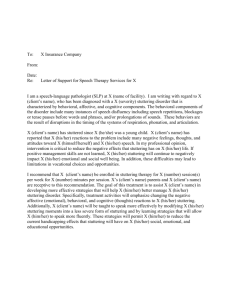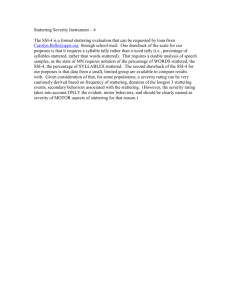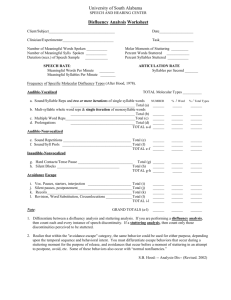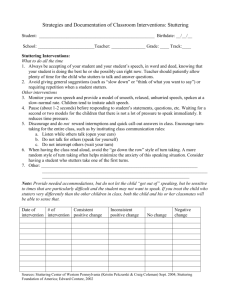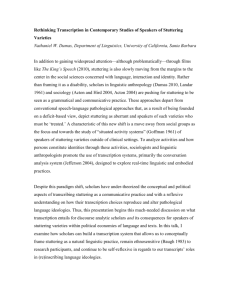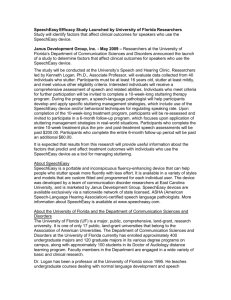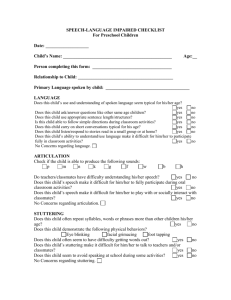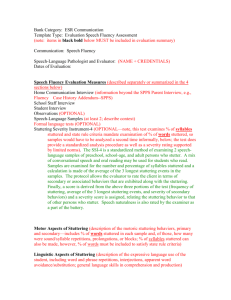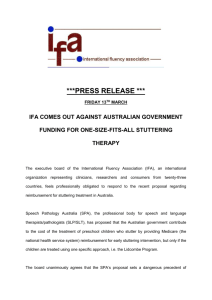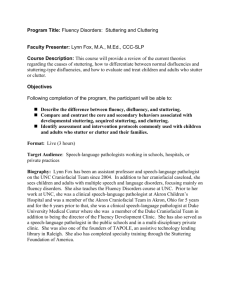To:
advertisement
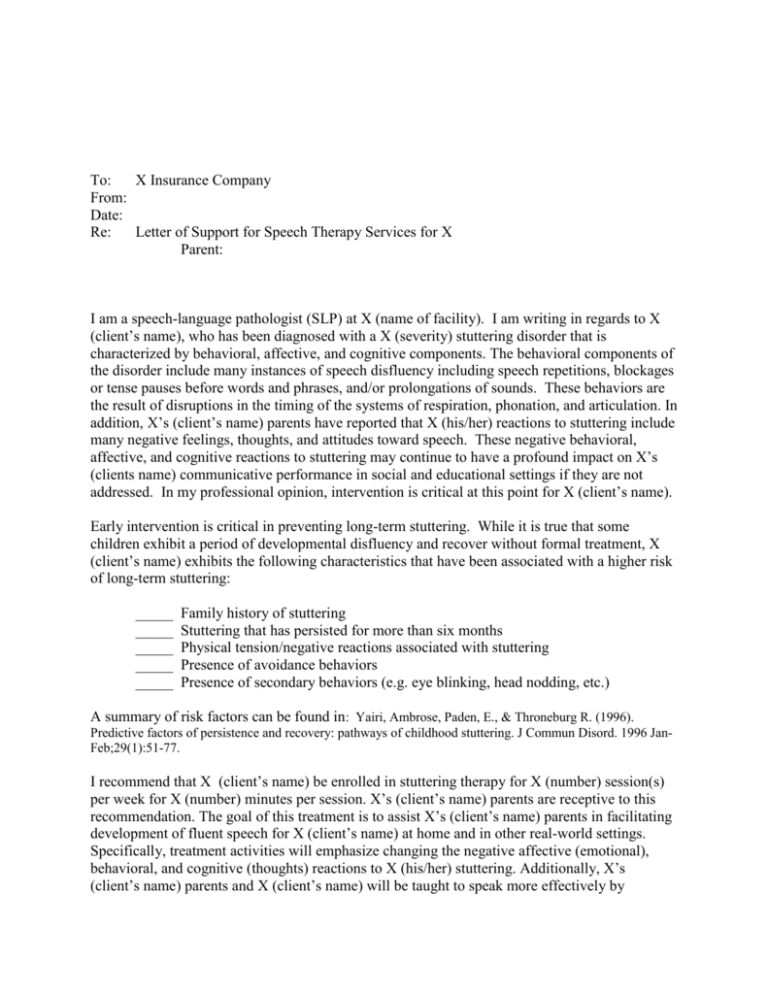
To: X Insurance Company From: Date: Re: Letter of Support for Speech Therapy Services for X Parent: I am a speech-language pathologist (SLP) at X (name of facility). I am writing in regards to X (client’s name), who has been diagnosed with a X (severity) stuttering disorder that is characterized by behavioral, affective, and cognitive components. The behavioral components of the disorder include many instances of speech disfluency including speech repetitions, blockages or tense pauses before words and phrases, and/or prolongations of sounds. These behaviors are the result of disruptions in the timing of the systems of respiration, phonation, and articulation. In addition, X’s (client’s name) parents have reported that X (his/her) reactions to stuttering include many negative feelings, thoughts, and attitudes toward speech. These negative behavioral, affective, and cognitive reactions to stuttering may continue to have a profound impact on X’s (clients name) communicative performance in social and educational settings if they are not addressed. In my professional opinion, intervention is critical at this point for X (client’s name). Early intervention is critical in preventing long-term stuttering. While it is true that some children exhibit a period of developmental disfluency and recover without formal treatment, X (client’s name) exhibits the following characteristics that have been associated with a higher risk of long-term stuttering: _____ _____ _____ _____ _____ Family history of stuttering Stuttering that has persisted for more than six months Physical tension/negative reactions associated with stuttering Presence of avoidance behaviors Presence of secondary behaviors (e.g. eye blinking, head nodding, etc.) A summary of risk factors can be found in: Yairi, Ambrose, Paden, E., & Throneburg R. (1996). Predictive factors of persistence and recovery: pathways of childhood stuttering. J Commun Disord. 1996 JanFeb;29(1):51-77. I recommend that X (client’s name) be enrolled in stuttering therapy for X (number) session(s) per week for X (number) minutes per session. X’s (client’s name) parents are receptive to this recommendation. The goal of this treatment is to assist X’s (client’s name) parents in facilitating development of fluent speech for X (client’s name) at home and in other real-world settings. Specifically, treatment activities will emphasize changing the negative affective (emotional), behavioral, and cognitive (thoughts) reactions to X (his/her) stuttering. Additionally, X’s (client’s name) parents and X (client’s name) will be taught to speak more effectively by modifying X (his/her) stuttering moments into a less severe form of stuttering and by learning strategies that will allow X (him/her) to speak more fluently. These strategies will permit X (him/her) to reduce the current handicapping effects that stuttering will have on X (his/her) social, emotional, and educational opportunities.
